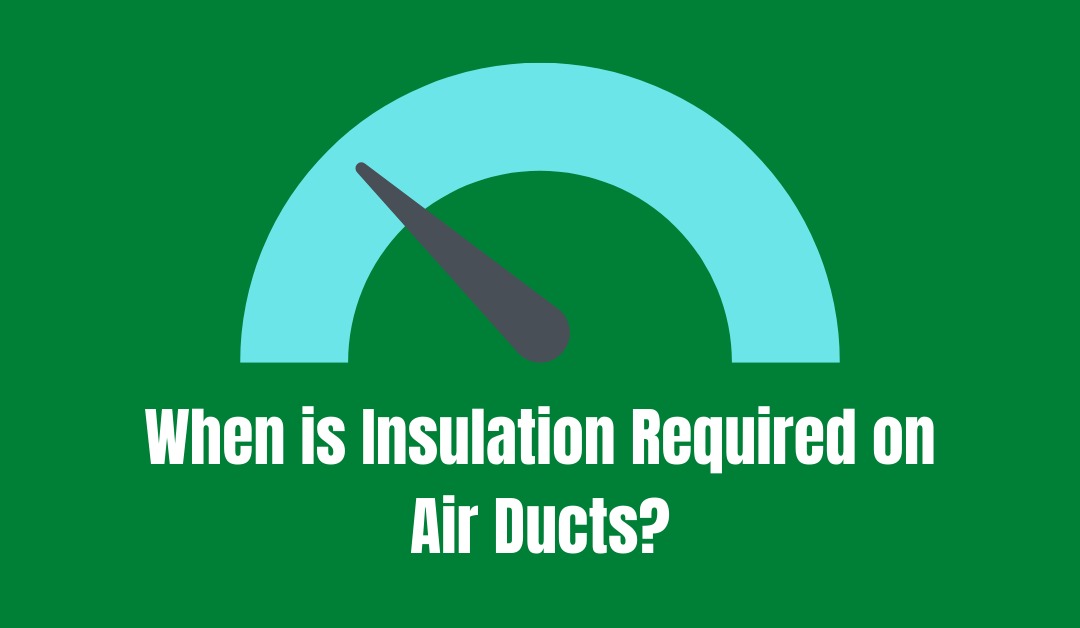Air ducts have become a necessary part of home accessories to maintain the proper flow of air in the houses. They help in maintaining the proper airflow and ventilation of the house and make the inside atmosphere comfortable for living. But low-quality and poorly installed ducts can create unwanted and unexpected issues. To avoid these issues, proper installation and insulation of the ductwork are necessary.
Have you ever thought deeply about the requirement of insulation on air ducts? No? Don’t worry. In this article, we are going to answer the questions like when and where insulation is required on the air ducts. Read further to learn about the requirement of insulation in detail!
What is Ductwork Insulation?
Before answering the question – “when is insulation required on the air ducts?” it is necessary to know what ductwork insulation is. Ductwork is insulated to provide perfect insulation to the air duct system. It ensures no leakage of heat and moisture in the air ducts. As a result, it is helpful in maintaining the correct temperature for indoor comfort. Ductwork insulation is a great idea for the long life and proper working of the air ducts and pipes.
Importance of Ductwork Insulation
Air ducts are installed all over the house, and each room requires a different temperature. Hence, it takes a longer time for ducts to provide the desired temperature at every corner of the home. Moreover, the thin material of ducts makes them prone to leakage at the joints. To avoid these types of unwanted damages, ductwork insulation is necessary.
Proper ductwork insulation provides the following benefits:
- Prevents leakage and condensation:
Insulation is one of the most effective measures for preventing leakage and condensation. It seals all the joints of the ductwork for preventing leakage.
- Boosts proper airflow:
It boosts proper airflow inside the air ducts to maintain a comfortable and ideal indoor temperature.
- Increases the efficiency of the air duct system:
Prevention of leakage results in proper airflow of the air ducts. Hence, it is not wrong to say that insulation also increases the efficiency of the ductwork.
- Beneficial in saving electricity bills:
Ductwork insulation is one of the most effective energy-saving techniques.
- Lowers maintenance costs of the ductwork:
Insulation is beneficial in lowering the maintenance cost and increasing the lifespan of the ductwork. It prevents early wear and tear of the ductwork.
- Reduces noise:
Insulation on the indoor ductwork is used as a measure of noise control. It prevents the large noise coming through the breakout of the air duct system.
- Makes it easier to use air duct cleaning equipment:
Insulation doesn’t let the dust particles and harmful bacteria settle on it easily. Hence, it is easier to clean insulated ductwork.
Do You Always Need Ductwork Insulation?
Besides having so many advantages of ductwork insulation, there are times when it is not necessarily required. According to experts, ductwork installed inside a thermal building doesn’t require insulation. Further, the need of insulating these ducts depends on the climate of the place. Insulation is necessary for cold and humid climates; however, insulation is not necessarily required in mild climates.
You don’t need to insulate the ductwork inside the house, but there are exceptions to this case. Insulate them at the joints to prevent leakage, and insulating the ductwork in unconditioned places like the basement is a great idea to avoid condensation.
Some ducts are available pre-insulated. They are either insulated from the outside or the inside. Before insulating, you must first check whether they are pre-insulated from the inside or not. If yes, then you don’t need to insulate them from outside.
When do You Need Ductwork Insulation?
Insulation is required at the joints of the ducts. As the air ducts are made of thin material like fiberglass or sheet metal, it is more prone to leakage at the joints. Insulation of the air ducts on joints can seal them and prevent leakage. As a result, the efficiency of your ductwork increases with a prolonged lifespan.
Insulation is also required in the unconditioned areas with a cool temperature like the basement, ceiling, etc., to avoid condensation. It is necessary to maintain the indoor climate and comfortability. Insulation is sometimes also used as a method of noise control. It controls and reduces the noise caused by the breakout of the ductwork installation.
Air ducts are great for maintaining a comfortable indoor climate. Hence, it promotes the mental and physical well-being of the members of the house. Apart from this, regular cleanliness is also required to prevent the bacteria and dust particles from settling on the ductwork. Insulation installed on the ductwork makes it easier to use the air duct cleaning equipment. Moreover, dust particles and harmful bacteria can’t settle on the insulated ductwork easily.
People might find insulation of the ductwork expensive initially, but it is a great method of cost control. Ductwork insulation is an energy-saving technique. Further, it also reduces the maintenance cost of the ductwork and increases its life span.
For safety measures, many countries have banned the use of combustible material for ductwork insulation. Hence, using quality material with an ideal thickness is necessary for the insulation of the ductwork.
Conclusion
As we all know that air ducts have become an integral part of home accessories; similarly, insulation is also required to keep the ductwork clean and safe. It increases the efficiency and the lifespan of the air duct system. But it is not necessarily required to insulate the ductwork everywhere. Unnecessary insulation can be harmful to your budget. So, it is necessary to analyze the requirement of insulation before spending money.
We hope that you must have found this article informative and useful and it has given all the answers to your questions regarding the requirement of air duct insulation.

